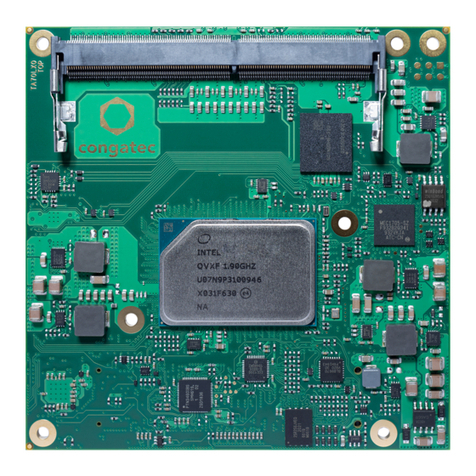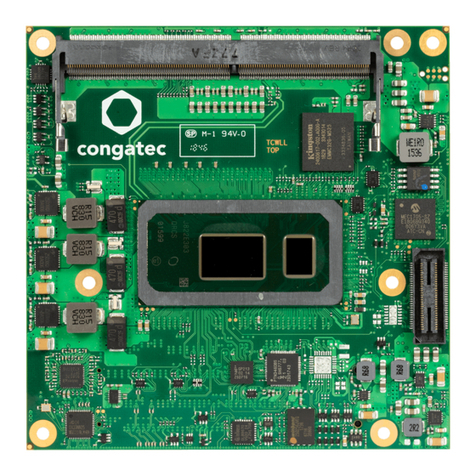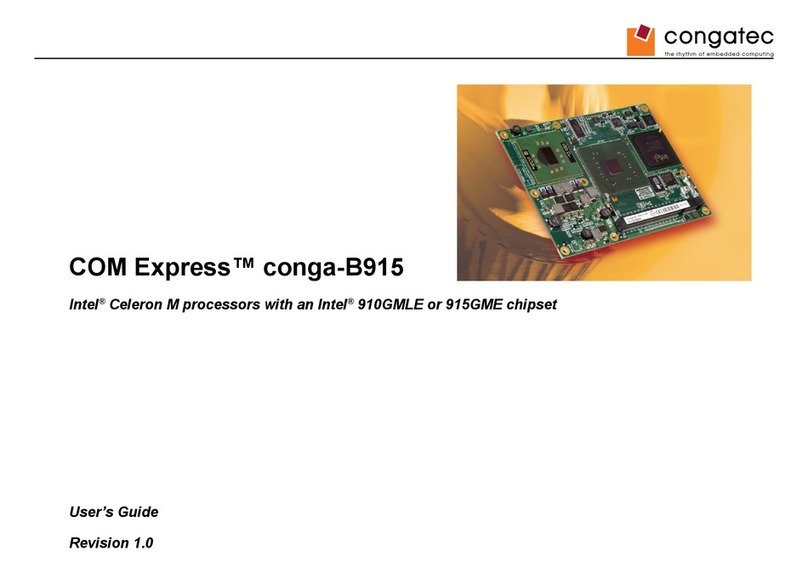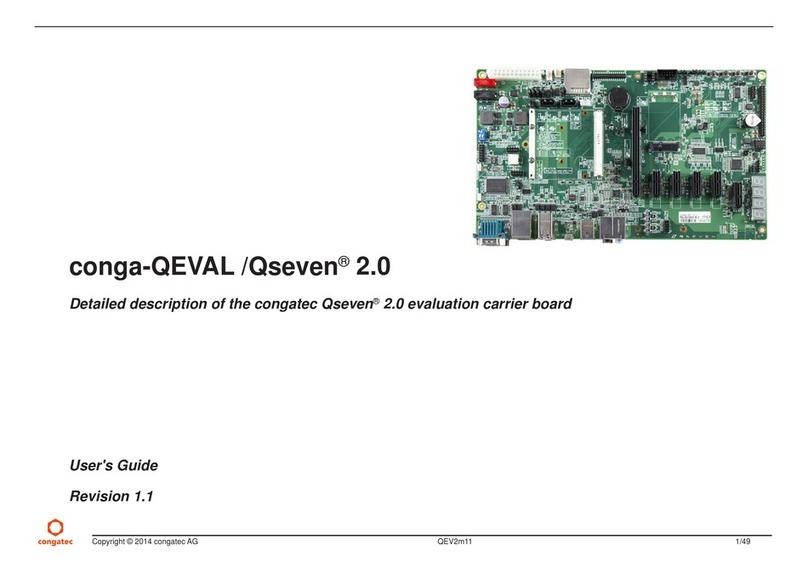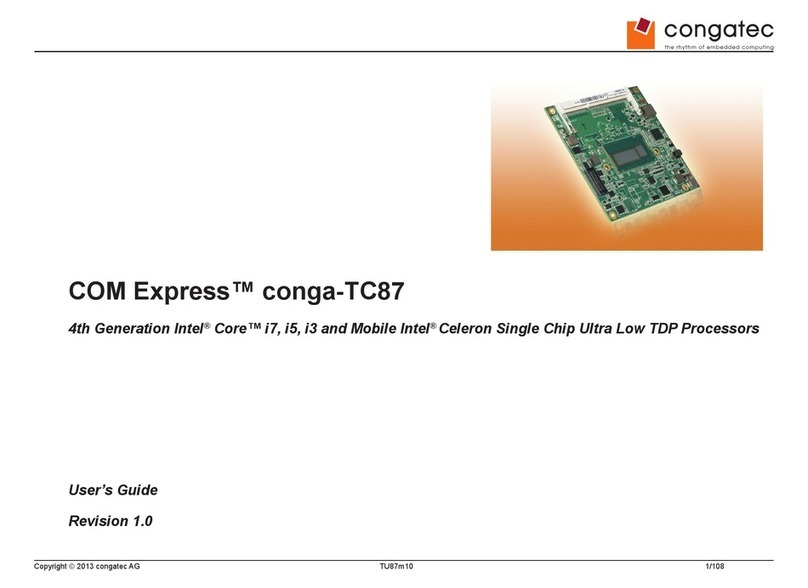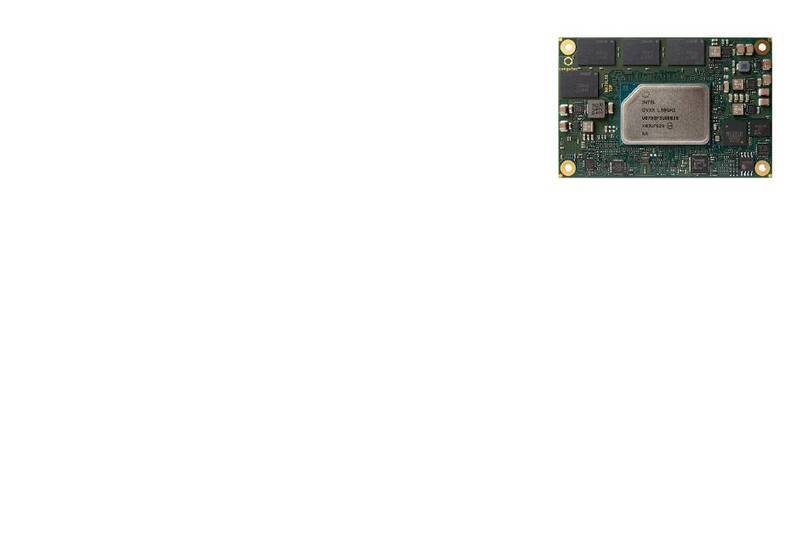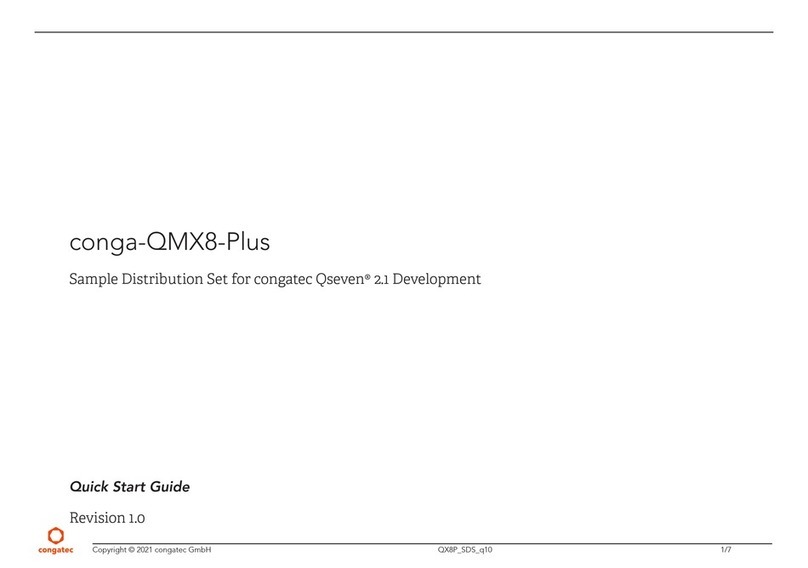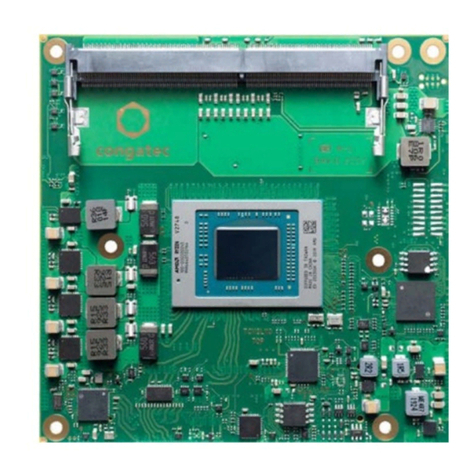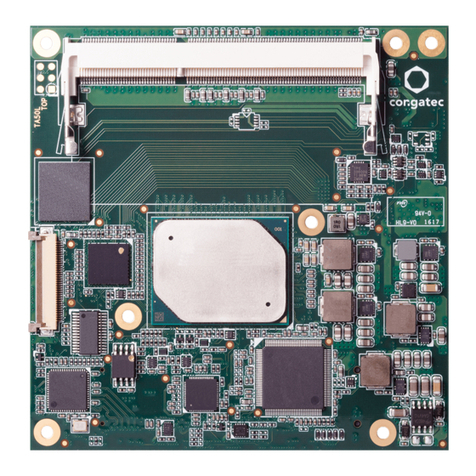Copyright © 2013 congatec AG QA30_QA3Em11 8/91
9 System Resources .................................................................... 57
9.1 I/O Address Assignment.......................................................... 57
9.1.1 LPC Bus.................................................................................... 57
9.2 PCI Configuration Space Map ................................................. 58
9.3 PCI Interrupt Routing Map....................................................... 59
9.4 I²C Bus ..................................................................................... 59
9.5 SM Bus..................................................................................... 59
10 BIOS Setup Description........................................................... 60
10.1 Entering the BIOS Setup Program........................................... 60
10.1.1 Boot Selection Popup.............................................................. 60
10.2 Setup Menu and Navigation.................................................... 60
10.3 Main Setup Screen................................................................... 61
10.4 Advanced Setup ...................................................................... 62
10.4.1 Watchdog Submenu ................................................................ 63
10.4.2 Graphics Submenu................................................................... 65
10.4.3 Hardware Health Monitoring Submenu ................................... 66
10.4.4 Trusted Computing Submenu.................................................. 67
10.4.5 RTC Wake Submenu................................................................ 67
10.4.6 Module Serial Ports Submenu ................................................. 67
10.4.7 Reserve Legacy Interrupt Submenu......................................... 68
10.4.8 ACPI Submenu......................................................................... 68
10.4.9 SIO Submenu........................................................................... 68
10.4.10 Serial Port 1 Submenu ............................................................. 69
10.4.11 Serial Port 2 Submenu ............................................................. 69
10.4.12 Parallel Port Submenu.............................................................. 69
10.4.13 Intel(R) Smart Connect Technology Submenu ......................... 70
10.4.14 Serial Port Console Redirection Submenu............................... 70
10.4.14.1 Console Redirection Settings COM0 Submenu....................... 71
10.4.14.2 Console Redirection Settings COM1 Submenu....................... 72
10.4.14.3 Console Redirection Settings Out-of-Band Management
Submenu 73
10.4.15 CPU Configuration Submenu................................................... 73
10.4.15.1 Socket 0 CPU Information Submenu ....................................... 74
10.4.15.2 CPU Thermal Configuration Submenu..................................... 74
10.4.16 PPM Configuration Submenu .................................................. 74
10.4.17 Thermal Configuration............................................................. 75
10.4.18 IDE Configuration Submenu.................................................... 76
10.4.19 Miscellaneous Configuration Submenu ................................... 77
10.4.20 SCC Configuration Submenu................................................... 77
10.4.21 PCI Subsystem Settings Submenu........................................... 78
10.4.22 PCI Express Settings Submenu................................................ 79
10.4.23 PCI Express GEN 2 Settings Submenu .................................... 80
10.4.24 Network Stack.......................................................................... 81
10.4.25 CSM Submenu......................................................................... 81
10.4.26 SDIO Submenu ........................................................................ 82
10.4.27 USB Submenu.......................................................................... 82
10.4.28 Platform Trust Technology ....................................................... 82
10.4.29 Security Configuration ............................................................. 83
10.4.30 Intel(R) Ethernet Connection I210 Submenu ........................... 83
10.4.30.1 NIC Configuration Submenu ................................................... 84
10.4.31 Driver Health Submenu............................................................ 84
10.4.31.1 Intel(R) PRO/1000 Submenu .................................................... 84
10.5 Chipset Setup .......................................................................... 84
10.5.1 North Bridge Submenu............................................................ 84
10.5.2 South Bridge Submenu............................................................ 85
10.5.2.1 Azalia HD Audio....................................................................... 85
10.5.2.2 USB Submenu.......................................................................... 86
10.5.2.3 PCI Express Configuration Submenu....................................... 87
10.6 Boot Setup............................................................................... 87
10.6.1 Boot Settings Configuration .................................................... 87
10.7 Security Setup.......................................................................... 89
10.7.1 Security Settings ...................................................................... 89
10.7.2 Hard Disk Security.................................................................... 89
10.8 Save & Exit Menu..................................................................... 89
11 Additional BIOS Features ........................................................ 90
11.1 Supported Flash Devices ......................................................... 90
11.2 Updating the BIOS................................................................... 90
12 Industry Specifications ............................................................. 91
